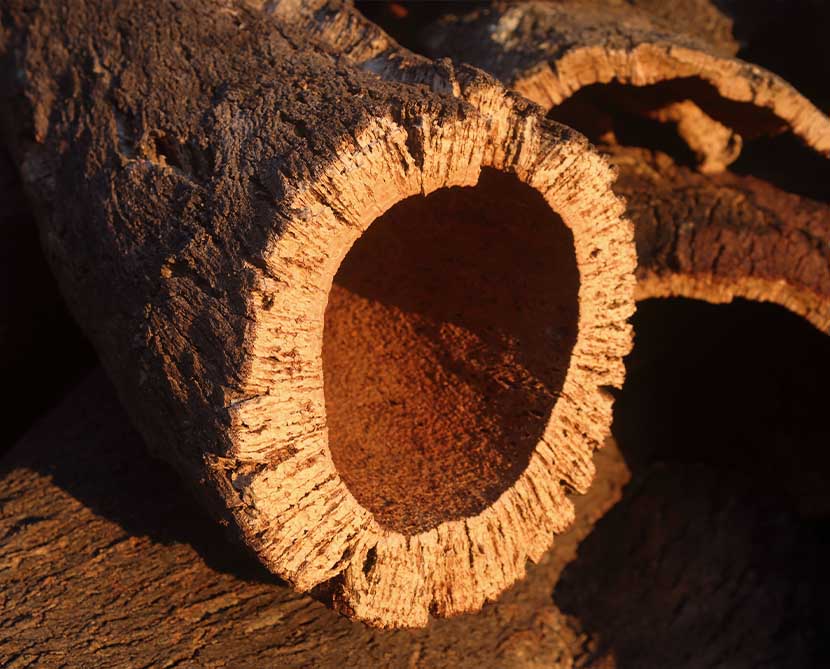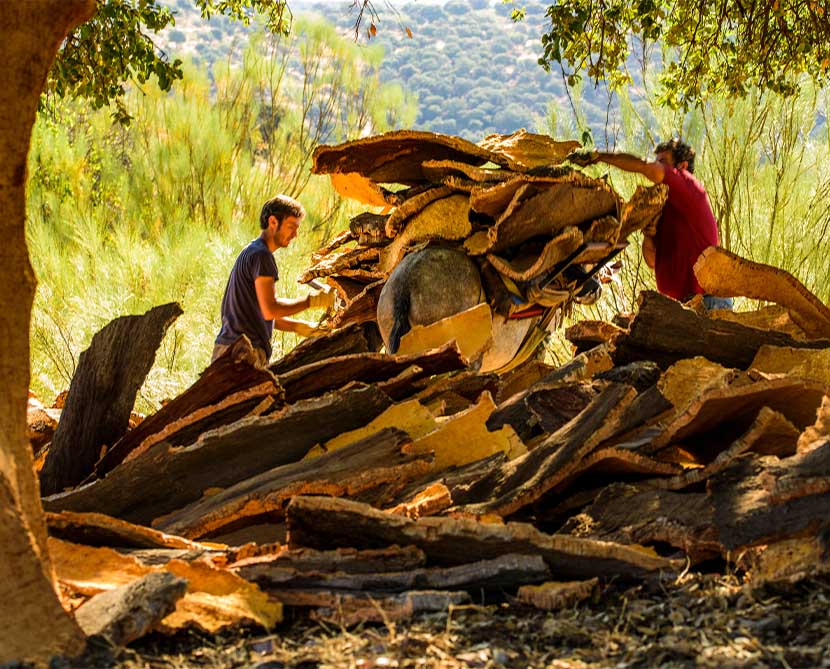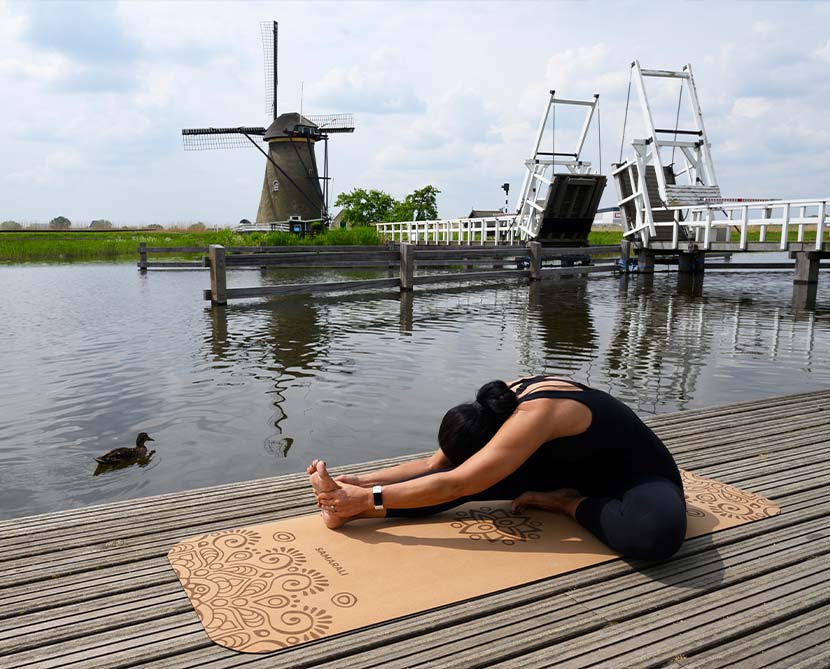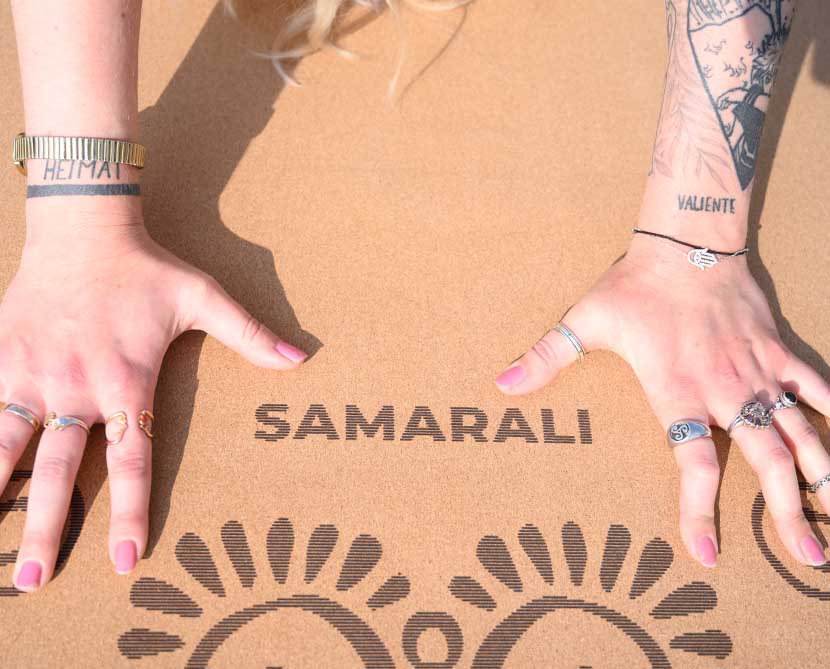
Cork:
The miracle material
“Yoga does not just change the way we see things, it transforms the person who sees.” – B.K.S Iyengar
No matter the reasons behind starting with Yoga, sooner or later the practice will affect us more deeply than just the outside of our well-being. We bring awareness to our deeds and thoughts as enjoy reconnecting with Nature. We probably become more sensitive to the environmental cause and start wondering whether there are alternatives to the plastic Yoga products we see everywhere.
Well, of course, there are! At Samarali we dream about a world where every being can live in harmony with each other and nature, and what’s a better place to start than yoga? It’s our mission to reduce unnecessary plastic and provide our customers with natural products that are good for ourselves and the environment. The pursuit for a better, greener material started with the discovery of cork. Cork outlasted and outperformed any other natural material, and has been used for thousands of years.
Much like modern wine corks, it was used as a stopper for bottles of liquor in the Middle Ages, but using it as a pliable fabric is relatively new. Natural cork fabric is made from shavings directly from the cork oak tree, or Quercus suber. The medium-sized, evergreen oak tree is native to northwest Africa and southwest Europe (Spain, France, Italy, Portugal, Algeria Tunisia, and Morocco).
Most cork on the market today is from Portugal, which is the world leader in cork production and home to the largest collection of cork oaks.
Cork oak forests, referred to as montados, are the lungs of the environment, the economy, and the society of Mediterranean countries. They have such an important role in nature and people that they are protected by law.
In Portugal, which has the largest cork oak forest area in the world, the cork oak is the national tree and has been protected by law since the 13th century.
A growing awareness of the value of the ecosystem of the cork oak forest has led to important initiatives in reforestation and the systematization of good practices. It is a way of ensuring the future. There is an old saying in Portugal: “Whoever cares for their grandchildren, plants a cork oak”.


Six reasons why
you should switch to Cork
Cork is renewable
Cork fabric starts with harvesting when the outer section of the bark is peeled back to reveal the inner cork. This can be done without harming the tree itself because the outer bark can regenerate itself. Some have suggested that harvesting cork can extend the life of the trees. The bark is harvested from the tree every 9-12 years. Each time cork is harvested; cork bark regenerates itself (and in doing so absorbs CO2). Cork trees live between 100 and 300 years. After the cork is harvested, it’s laid out to dry for about six months. Then, the cork is boiled in water, flattened, and molded into whatever material it will be used for.
Cork is biodegradable
Cork is a natural, environmentally friendly material. It biodegrades completely and can be easily recycled without producing any toxic residue. It’s not going to spend the next few centuries clogging up a landfill somewhere. It can even be added to your compost bin.
Cork is antimicrobial and hypoallergenic
Cork is naturally antimicrobial — it contains compounds called Phenolics which kill bacteria and fungi. This keeps your mat clean and free from the odour of perspiration. Whilst synthetic yoga mats often absorb and retain bad smells, cork naturally repels odours and emits an almost undetectable woody fragrance. This makes cork a great choice for hot yoga or for yoga studios looking to keep their shared equipment hygienic. Cork is also resistant to dust and airborne allergens, so you can enjoy those deep inhales.


Cork is durable
Cork also contains suberin, a wax-like material that repels water and contributes to cork’s durability as a material. Many yoga mats begin deteriorating after only a couple of years of use whereas cork mats remain durable and long-lasting.
Cork is not slippery
Another reason why cork yoga mats are good for exercise is that they are non-slip, even when wet. When the cork gets wet, it releases suberin which increases the grip and makes the mat slip-resistant. The rubber backing makes it non-slip on the ground as well, creating a great platform for your yoga practice. Even if you practice hot yoga, you will not be slipping or sliding. The wetter the mat gets, the more grip it has.
Cork is easy to clean and maintain
You can wipe your cork products down with a wet cloth and dry them thoroughly. To remove stains, add vinegar, soap, or soda to the water to create an organic cleaning solution. Do not use harsh chemicals on the cork material. It’s recommended that you do this at least once per week.
